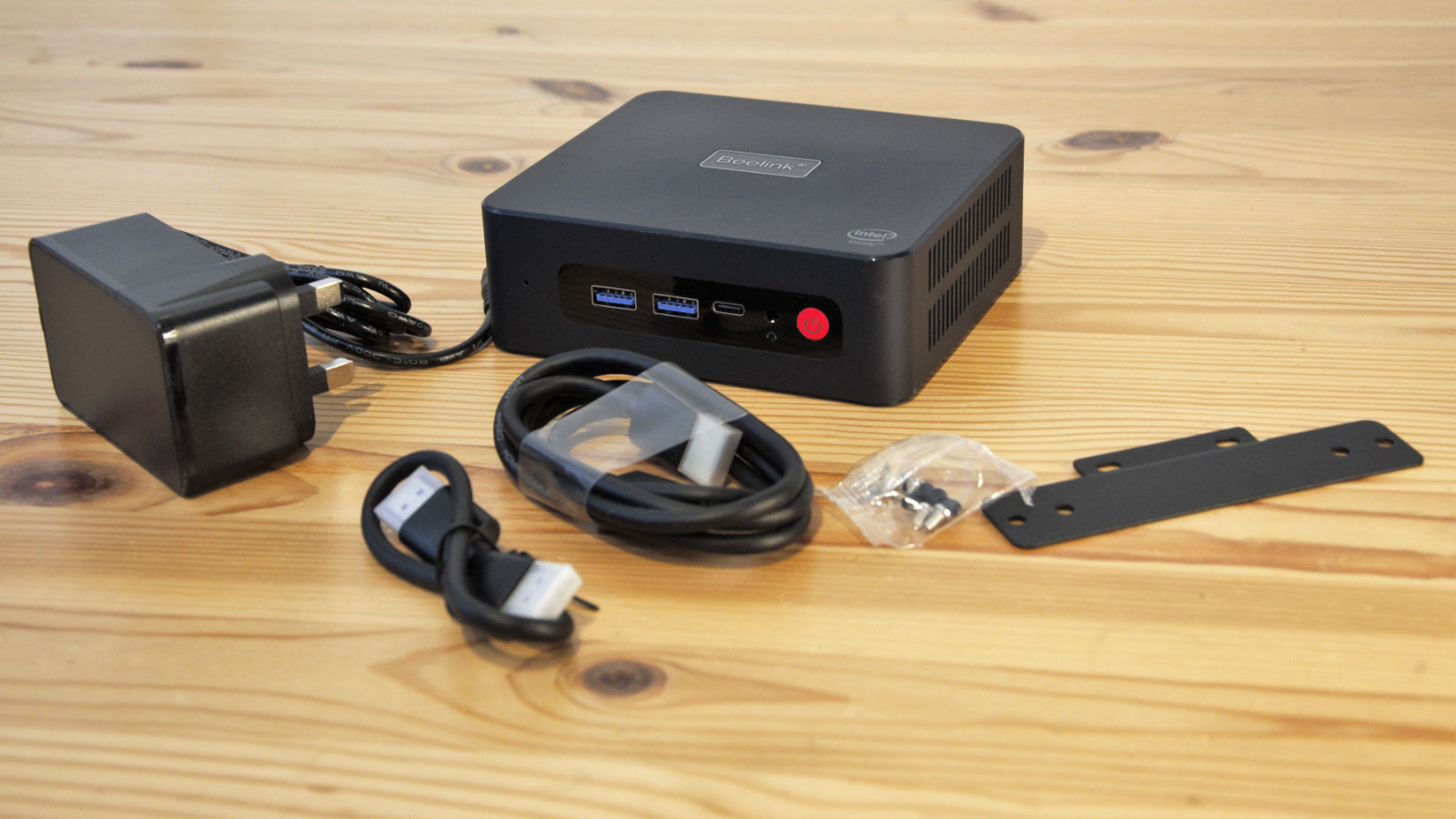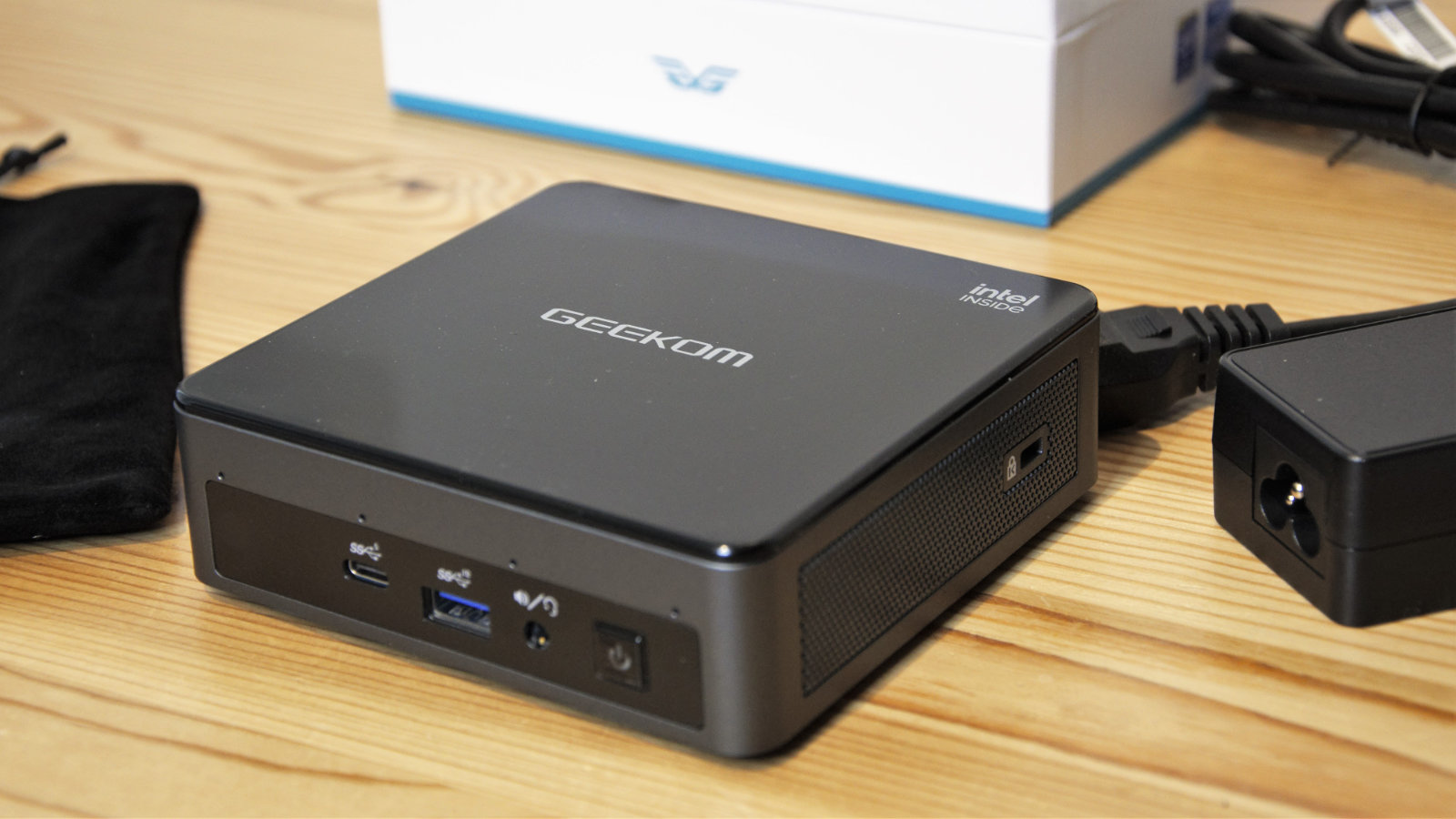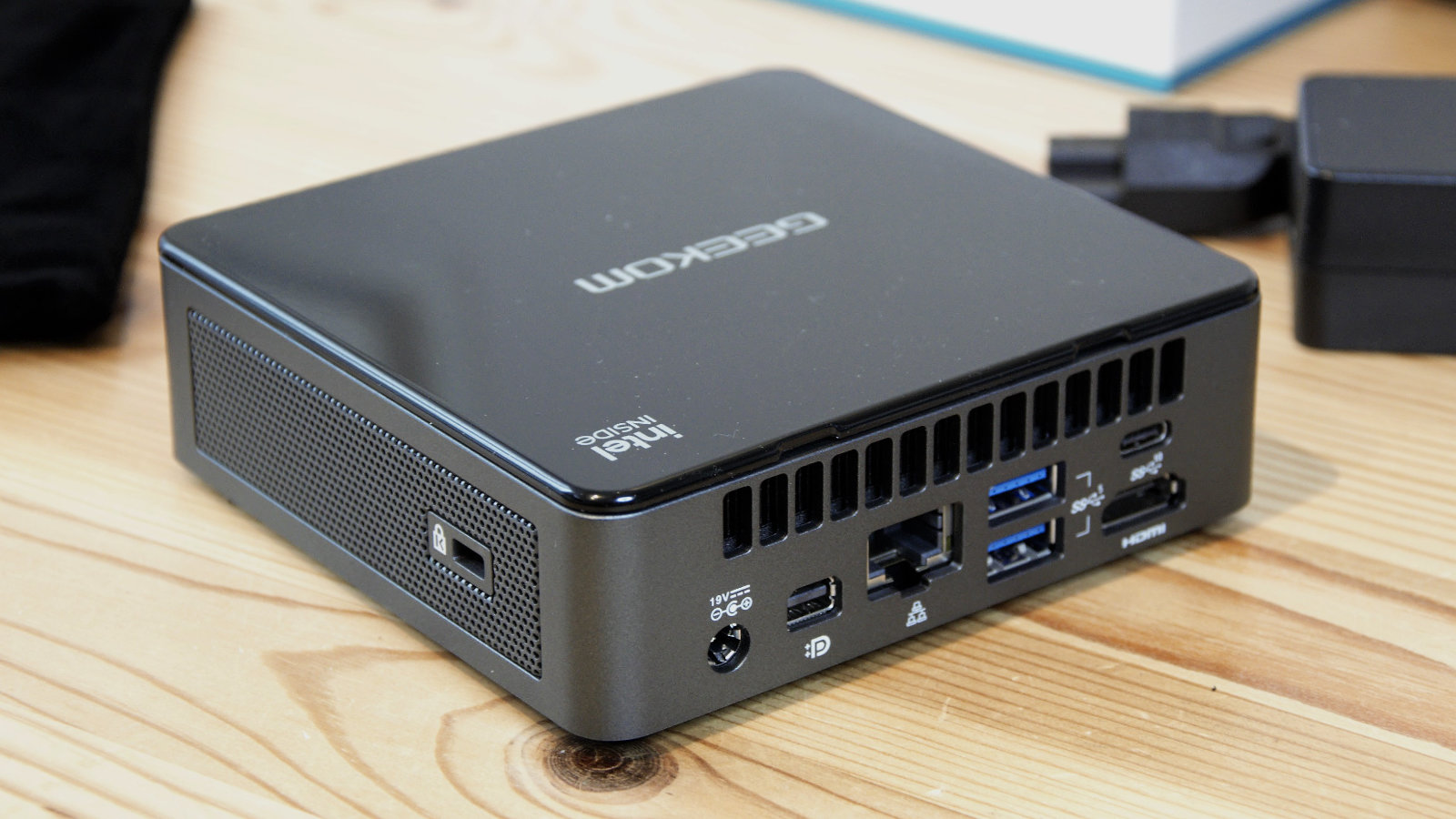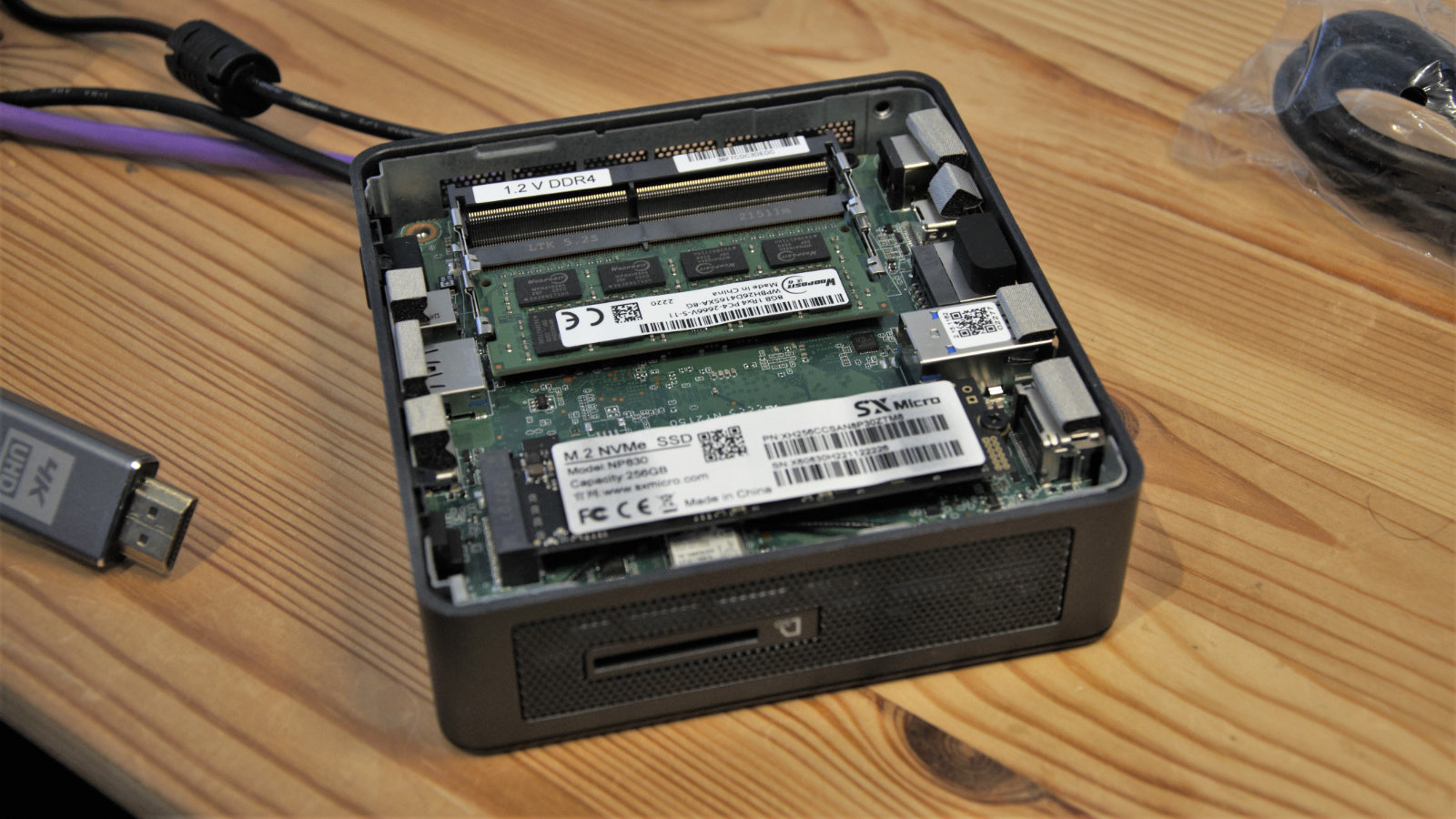GEEKOM is a global operation headquartered in Taiwan. Started by a gentleman called Kom de Olde, it has been making a wide range of computer products for nearly twenty years.
One market GEEKOM is especially active is the Mini PC sector. It currently makes four models that include the Mini IT11, Mini IT8, Mini IT8 SE and the MiniAir 11 that we’re looking at today.
These are exclusively Intel-based designs, featuring 8th and 11th generation silicon encompassing Celeron, Core i3, i5 and i7 class processors.
The MiniAir 11, as the name suggests, uses an 11th Gen Celeron CPU and is currently the cheapest NUC design offered by this brand.
In an exceptionally competitive market, what has the MiniAir 11 to offer that makes it worth considering?

Price and availability
Currently, GEEKOM is only selling the MiniAir 11 in only one SKU with 8GB of RAM and. 256GB SSD directly from its website. The cost of that is $229 (£199), and that includes sales tax in the USA and UK.
It can be found on Amazon.com for $235.99 for those that prefer that source
In the UK, Amazon offers two SKUs of the same hardware, with the 8GB+256GB model costing £203.90. At this time, the 8GB+500GB option is not priced or available.
There are cheaper NUC-sized systems available, but the pricing of this one is competitive.

Design
Given the narrow definitions that Intel created for NUC computers, they all tend to follow a predictable pattern, and the MiniAir 11 is no exception.
While the outside is mostly moulded plastic, the weight of this unit makes it feel more substantial than others we’ve evaluated. And, unless abused, this equipment should give a few years of good service.
As this isn’t an actively cooled design, airflow was high on the agenda of its designers. Both sides have sections of perforated metal for air to enter and along the back is a larger slotted outlet.
The number and placement of ports are often a good indication of what the designers thought the machine would be used for. Those on the MiniAir 11 all point to a light office role rather than an embedded function.
To that objective, the front face has two USB ports, one each of Type-A and Type-C, along with the power button and the 3.5mm audio jack.
On the left is the full-size SD card reader and on the right is a security slot, leaving all the other ports on the back. These include three more USB ports, an HDMI 1.4 out, Mini DP out and a single gigabit LAN port.

A definite strength of this design is the USB ports, as there are five in total, three of the old Type-A variety and two of the newer USB-C. Three of these are 5Gbit and two 10Gbit, one for each port type.
Together with the MiniAir 11 in the box are an HDMI cable, an adapter to convert MiniDP output to HDMI, a VESA mounting plate (with screws), a laptop-style PSU and a soft carry bag.
While the soft bag is a nice touch, we suspect that most MiniAir 11s are likely to be mounted on the back of a monitor or placed under one at the edge of a desk.
Getting inside the MiniAir is easy, as you can spudger the top off, and the underside detaches with four screws that run through the four small rubber feet.
Taking off the top isn’t that useful, but the underside provides access to the M.2 storage and the DDR4 memory slots, both of which can be changed.
There is nothing remarkable in this design, but equally, there isn’t anything disastrous either.
Hardware
Spec sheet
Here is the GEEKOM MiniAir 11 configuration sent to TechRadar for review:
CPU: Intel Celeron Processor N5095 (4 Cores, 4 Threads, 4M Cache, up to 2.90 GHz)
Graphics: Intel UHD Graphics 605
RAM: 8GB DDR4 RAM (Expandable to 32GB)
Storage: M.2 2280 256GB NVMe SSD
Ports: 2x USB 3.2 Gen 1 Type-A, 1x USB3.2 Gen 2 Type-A, 1x USB 3.2 Gen 2 Type-C, 1xUSB 3.2 Gen 2 Type-A, 1x HDMI 1.4, 1x Mini DisplayPort, 1x universal audio jack, 1x SD card reader (USB2.0)
Connectivity: Dual-Band WiFi, 1x Gigabit LAN adapter, Bluetooth v4.2
Size: 117 x 112 x 34 mm (W x D x H)
OS installed: Licensed Windows 11 Pro
Accessories: Wall-Mounted bracket, Adapter12V/3A, HDMI and DisplayPort cables
In theory, the N5095 silicon in this machine is the only Jasper Lake (Tremont-based) Desktop Celeron that Intel has made. Although depending on what documentation you read, it is also a mobile part, confusingly.
Its exact designation appears to be determined by the power consumption, and the N5095 does have the scope to be used in a laptop with active cooling or, as it is in the MiniAir 11, with a passive cooler.
Instead of using this chip, many NUC designers have chosen the mobile N5105, which has lower wattage draw but higher clock speeds, and others have gone with Elkhart Lake mobile chips.
In comparison to the remarkably similar N5105, the N5095 is a disappointment. It takes 15W, not 10W, of power and has an identical 2GHz base clock and 2.9GHz burst clock to the N5105. With less performance but more voltage, this makes no sense to anyone but Intel.
Both these chips have four cores, 8 PCIe lanes, no hyperthreading, and can address 16GB of RAM.
But the N5015 has integrated AX class wireless networking and a GPU with 24 execution units. Conversely, the UHD Graphics in the N5095 only has 16 units and a lower burst clock on the GPU.
Where AMD and Nvidia fabricate their chips at 5nm and even 4nm, Intel made these at 10nm, limiting their power efficiency and performance compared to these counterparts.
To be clear, neither the N5015 nor the N5095 are anything special, but the designers might have made a mistake going for the N5095, as it’s undoubtedly the less impressive of these two.
Not wanting to spoil anything, but proof of these assertions turns up in our benchmarks.

Another choice made here that is more understandable but is one of the difficult choices that using such low-powered silicon forces designers to make.
When complimenting this design with the number and specification of its USB ports, we didn’t factor in that the N5095 only has eight PCIe Gen 3 lanes.
How precisely these lanes are divided up isn’t obvious, but based on the performance of the NVMe drive in this system, only two lanes are allocated to the M.2 slot.
The speeds on this port are still faster than SATA, but not the fantastic performance you might expect from a desktop M.2 NVMe slot with four PCIe 3.0 lanes.
Another issue is that GEEKOM named this the MiniAir, inferring that it’s best placed to be wirelessly networked. But that’s an incorrect assumption since the N5095 doesn’t have integrated AX class WiFi, and the chosen wireless module only offers WiFi 5 and Bluetooth 4.2.
The WiFi onboard can still work well, but those wanting a more reliable connection might be better served using the Ethernet LAN port and a cable.
What we liked about this, and many NUC designs, is that it can be upgraded easily.
Removing the underside takes a few seconds, and once inside, the NVMe drive can be swapped, and the memory expanded. The review machine came with a 256GB M.2 2280 drive, and this could be replaced with up to a 4TB in this form factor.
The memory is socketed, thankfully, and the 8TB single stick can be augmented with another of up to this capacity to bring the RAM up to 16GB.
Mistakenly on the GEEKOM website, it says that it can be upgraded to 32GB, but the limit on the N5095 is 16GB.




